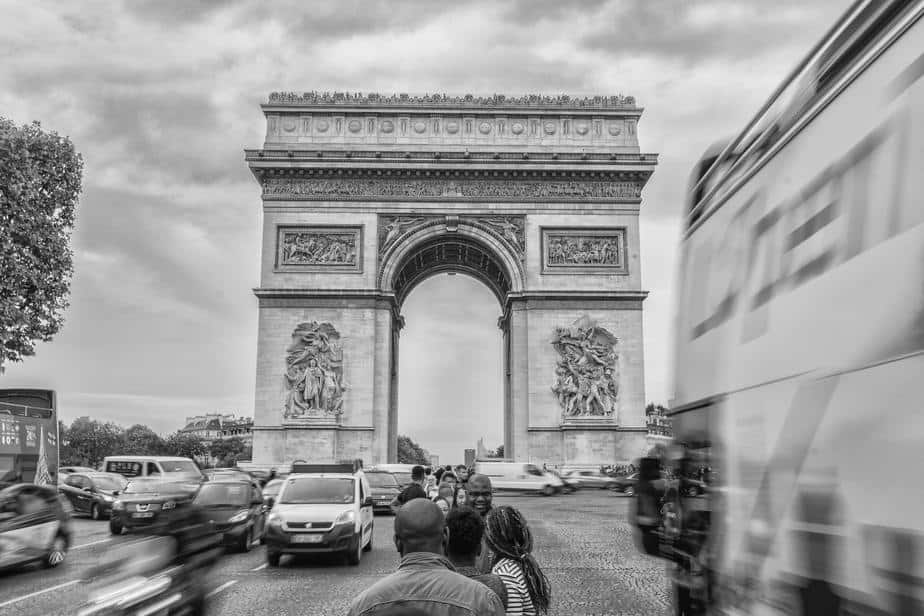Welcome to Facts Vibes! Today, we’re delving into the fascinating world of l’Arc de Triomphe. Get ready to uncover intriguing facts about this iconic landmark that has stood witness to history. From its architectural marvel to its historical significance, let’s explore the secrets behind this Parisian masterpiece.
The History and Architecture of L’Arc de Triomphe
L’Arc de Triomphe is a renowned historical monument located in the heart of Paris, France. Standing at the western end of the Champs-Élysées, it serves as a symbol of French national identity and pride. The construction of this iconic arch was ordered by Napoleon Bonaparte in 1806, following his victory at Austerlitz. It was designed by Jean Chalgrin and completed in 1836, long after Napoleon’s reign had ended. The architecture of L’Arc de Triomphe is characterized by its neoclassical design , with intricate carvings and detailed sculptures adorning its façade.
The monument stands at a height of 50 meters, making it the second-largest triumphal arch in the world. L’Arc de Triomphe is adorned with reliefs and inscriptions commemorating the triumphs and sacrifices of the French Revolutionary and Napoleonic Wars. Visitors can climb to the top of the arch to enjoy breathtaking views of the city, including the famous Eiffel Tower.
Throughout its history, L’Arc de Triomphe has served as a powerful symbol of victory, resilience, and national unity. It has been the site of numerous important events, including military parades and state funeral processions. Today, the arch continues to attract millions of visitors from around the world who come to marvel at its grandeur and learn about its rich historical significance.
Most popular facts
The Arc de Triomphe is a famous monument in Paris, France, located at the western end of the Champs-Élysées.
The Arc de Triomphe is a famous monument in Paris, France, located at the western end of the Champs-Élysées.
It was commissioned by Napoleon Bonaparte in 1806 to celebrate the French military victories.
The Arc de Triomphe was commissioned by Napoleon Bonaparte in 1806 to celebrate the French military victories.
The construction of the Arc de Triomphe was completed in 1836, long after Napoleon’s reign ended.
The construction of the Arc de Triomphe was completed in 1836, long after Napoleon’s reign ended.
The monument stands at a height of 50 meters and is 45 meters wide.
The monument stands at a height of 50 meters and is 45 meters wide.
The names of major French victories and generals are inscribed on the walls of the arch.
The names of major French victories and generals are inscribed on the walls of the arch.
The Tomb of the Unknown Soldier from World War I lies beneath the arch and is commemorated daily with a flame.
The Tomb of the Unknown Soldier from World War I lies beneath the arch and is commemorated daily with a flame.
The arch offers a stunning panoramic view of Paris from its observation deck.
The arch offers a stunning panoramic view of Paris from its observation deck.
The design of the Arc de Triomphe is inspired by the ancient Roman triumphal arches.
The design of the Arc de Triomphe is inspired by the ancient Roman triumphal arches.
The monument has been a focal point for numerous historic and cultural events in France.
The monument has been a focal point for numerous historic and cultural events in France.
The Arc de Triomphe is the site of an annual commemoration ceremony on Armistice Day.
The Arc de Triomphe is the site of an annual commemoration ceremony on Armistice Day.
An eternal flame was lit atop the arch in 1923 in memory of the unknown soldiers who died in World War I.
The eternal flame atop the arch was lit in 1923 in memory of the unknown soldiers who died in World War I.
The arch has featured prominently in art, literature, and popular culture throughout history.
The arch has featured prominently in art, literature, and popular culture throughout history.
Visitors can access the arch by walking through an underground tunnel from the nearby Avenue des Champs-Élysées.
Visitors can access the arch by walking through an underground tunnel from the nearby Avenue des Champs-Élysées.
The Arc de Triomphe is one of the most iconic landmarks in Paris and draws millions of visitors each year.
The Arc de Triomphe is one of the most iconic landmarks in Paris and draws millions of visitors each year.
It continues to serve as a symbol of French national pride and identity.
The Eiffel Tower continues to serve as a symbol of French national pride and identity.
In conclusion, l’Arc de Triomphe stands as a powerful symbol of French history and pride, encompassing historical significance and architectural magnificence. Its legacy continues to inspire awe and admiration, captivating visitors with its monumental presence and timeless elegance. As an enduring icon of Paris, l’Arc de Triomphe embodies the spirit of resilience and triumph, seamlessly weaving together the past, present, and future of this iconic city.
